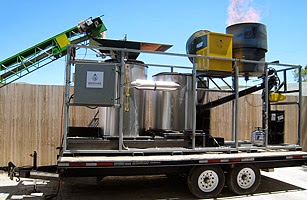Given the scale of the climate challenge, everyone wants to find a silver bullet, a way to cut carbon emissions
quickly and cheaply. Until someone perfects cold fusion, however, a cleaner economy will require a portfolio of new and innovative technologies, each playing its part. But that doesn't mean there aren't shortcuts on the road to zero carbon. Here's a deceptively simple one: biochar.
Plants absorb carbon dioxide as long as they're alive, but once they're cut down or burned, that carbon is released back into the atmosphere. Keeping trees standing — especially in tropical areas — is one way to save that carbon. But if plants are cut down, perhaps for agriculture, and you burn the residue in a controlled, low-oxygen atmosphere — a simple process called pyrolysis — you can create charcoal, a stable and solid form of carbon. If you then mix the biochar with certain soils, you can also reduce the amount of methane and nitrous oxide, both of them greenhouse gases, that the soil would naturally release. The result is a two-for-one carbon cutting special, and the potential is tremendous. A recent study in Nature Geoscience found that biochar could offset 12% of global carbon emissions. The challenge is that biochar has relatively little value on its own, so there's not much business case for making the product right now. That's one more reason a carbon price would be so useful.

No comments:
Post a Comment